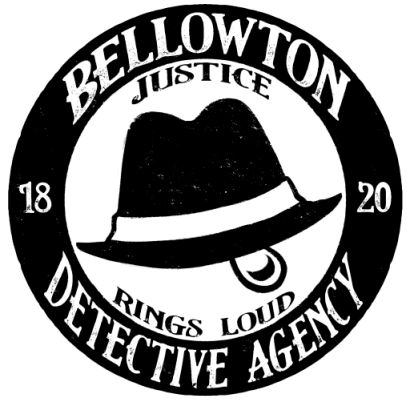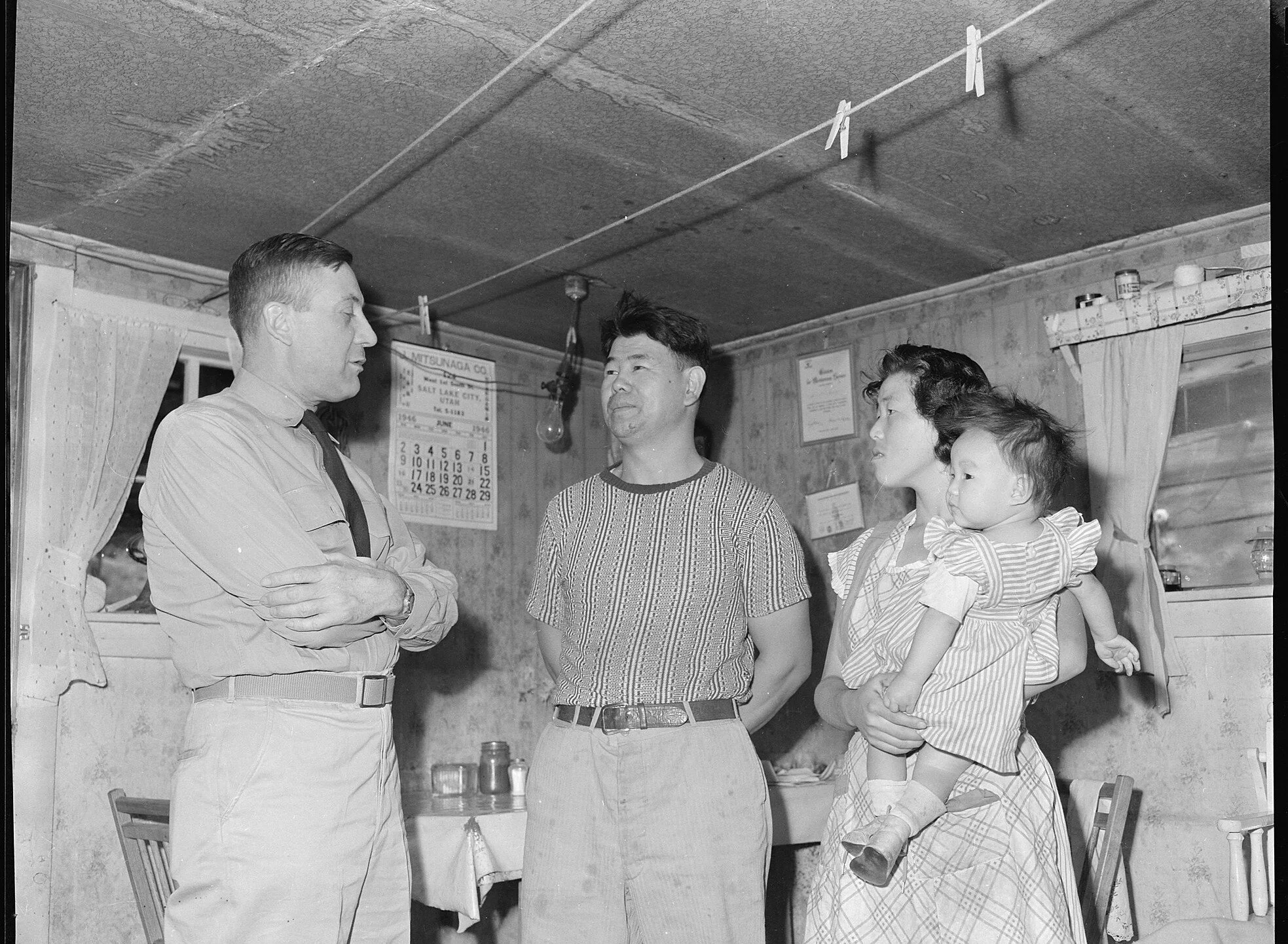The Bellowtons and Bartlebee Union Busting
A member of the Bellowtons (left) discussing Union efforts with one of Bartlebee Brands directors.
The history of Unionization by Bartlebee Brands workers is for all things, a display of the tenacity of the workers spirit and ability to collaborate under pressure. As displayed countless times throughout this update the company was an unfair place to work, a dangerous place to be employed, and depressingly commonplace in the greater scheme of things. Yet from this mistreatment several workers came to the same conclusion: that a life lived beneath the thumb of their employers was not sustainable, nor a life to live at all. In 1935, several workers embittered by the brutal conditions they were forced to work in came together with the intention of forming a union at Bartlebee Factory Number Eight. The details are hard to get concrete but I will do my best to recount them to you.
Although the names of the workers from the first unionization attempt are unknown, much of what has been said is that they first proposed the idea in secret to their fellow colleagues. After much convincing, they managed to gather enough individuals together into a whole that the idea of unionization became a credible threat in the eyes of upper management. The Bellowton Detective Agency - founded in 1820 - was brought on board by the company in order to suppress and disrupt the unionization efforts through any means necessary.
Original Bellowton Detective Agency logo. In the middle of the circular logo is a detective hat with a bell hanging from it. The text on the logo reads: Bellowton Detective Agency, Justice rings loud, 1820.
The modern day logo for the Bellowton Detective Agency. A colored logo with the same hat and text of the first logo. However gloved hands hold the sides of the logo ring.
The Bellowton Agency has its roots deep in American history. First gaining notoriety for their role in preventing the assassination of newly elected president Abraham Lincoln, the group went on to be one of the most well known organizations in the law enforcement landscape. Although it should be noted that the agency, in their own words, has no ethics statement and operated purely on a pay by pay basis, taking on jobs for all sorts of illicit and shady groups. (You may notice that I am using present tense when referring to the Bellowtons and that is because, for once this group is still in operation today, strike breaking and union busting in less physical but still disruptive ways.) Regardless, when the Bellowtons were brought in to restore order to the eighth Bartlebee factory they did what they do best: they stalked workers, intimidated them outside work hours, spread rumors, destroyed morale, infiltrated meetings, and even resorted to physical violence in several cases.
Black employees of factory eight attempting to form their own union after being denied union entry by their white coworkers. The two men and two women gather in what appears to be a closed office or storeroom with sullen serious expressions, they look worriedly at each other and are holding their hands behind their backs or clasping them together at their front.
A crowd of union members demonstrating outside one of the many stores supplied by Bartlebee Brands, at the time they were labeled disruptive but it was these tactics that brought attention to their cause. Multiple unionizers, all wearing hats and business casual clothing, gathered together and holding a sign that reads: “HELP US WIN OUR FIGHT FOR A LIVING WAGE”
Something important to note is that, for all the deception and intimidation being utilized by the Bellowtons there was another factor which ultimately contributed to the failure of the first union. At the time, and for most of the company's history, a majority of Bartlebee Brand factory workers were black. Underpaid, exploited, experiencing with greater intensity and in different forms the violations non-white workers endured. It is with this in mind that you would likely think the segregated workers would come together and use their collective strength to secure better conditions for themselves. However this was not the case, as was (and still is) common, segregation ran deeper than laws and institutions; it ran to the core of many white workers' internal values. Many unions of the time barred black workers from entry and despite many black unions being created by black workers, these unions were easier to justify dismantling not only by the companies but by the state, who saw them as a threat to the American way of life. The proposed and newly born union of Factory Number Eight was to be one such group, and thus it was incomplete and weak. The company easily beat down the union, and by 1940 it was successfully dismantled. Following this, the Bellowtons would be kept on standby by Bartlebee in order to prevent such an incident from occurring again.
A union member (middle) exposing a Bellowton spy (far left) at a union meeting. The union member is standing in the middle of a disgruntled gathering of men in a school building. The union member furiously gestures towards the spy, a nervous shameful faced man, who cowers in his seat at one of the tables.
In 1941, Factory Nine opened its doors and with it came a whole new level of workplace abuse and human rights violations. To speak on them again would be redundant, it is with all we have learned in mind that the birth of a new union is not surprising. The workers of Factory Nine were more organized than their predecessors, less scrupulous about following the proper channels, and exceptionally more willing to use underhanded methods in order to get what they wanted. Yet for all the incidents in which factory foremen were dragged out behind the factory and beaten black and yellow, what saw the union through the attempts to dismantle it was the willingness its organizers had to create a group in which black workers were not a secondary consideration. At great risk to themselves, the workers from both sides of the factory convened during and after work hours, sometimes in secret and sometimes using elaborate chains of communication involving the usage of notes and station rotation schedules. The story behind the Factory Nine workers is pretty amazing all things considered; there are so many accounts of workers becoming friends, visiting each other's families for dinner, skirting the lines of segregation in order to spend time with each other.
From the sea of workers several individuals arose as voices for the union. Amongst the most prominent of them was Cecil Grant, a former political organizer who had fallen on hard times and used his knowledge to the unions benefit in demonstrating and responding to Bellowton interference. Another prominent organizer was Isaiah Hoffman, an ex-teacher who also had a background in organizing counter segregation protests - which is to say none of this happened in a vacuum. The union was not born out of thin air nor did it come about through luck; it took meticulous organized effort on the part of everyone. It was not as simple as a single worker getting tired and happening to resist, but I digress.
Isaiah Hoffman (far left) organizing plans with other members at one of their homes. The six union members lean over a set of papers that are sprawled across a table, all in attendance are black and wear overalls underneath coats. Some wear newsie type hats, wide brimmed hats, and Isaiah himself wears a cowboy like hat he is leaning in the most towards the table and seems to be writing on a piece of paper. Three children play amongst themselves at the edge of the adults meeting.
Cecil visiting the home of a fellow union member. An Asian American family talk with Cecil in their home, the room is extremely bare with only minimal decorations and laundry drying lines extending across the space. The mood is mostly casual as the group talks about events. The husband has his hands behind his back and the wife, wearing a patterned apron, holds her scruffy haired child between her arms.
In 1957, the Factory Nine Botanical Garden event took place and with it were the terrible circumstances which forced Bartlebee Brands to recognize the Union as an official entity. As recorded by countless sources of the time, something went wrong with the operation of Factory Nines boiler, perhaps due to the overworked employees being stretched thin by the big event and failing to check or be present to regulate the boiler, leading it to explode. In the aftermath almost half of the factory was destroyed along with countless lives. The chaos nearly destroyed Bartlebee Brands as a corporate entity and in the midst of numerous legal battles, investigations and hearings, they had no time to deal with any more chaos; something the union took advantage of. A strike was organized, workers made signs, chanted slogans, made a show of force, and a panicked Bartlebee Brands rashly capitulated to the demands of the workers in an act of self preservation. Somehow or another the company would survive this period, never quite again being the juggernaut it once was but keeping itself along for several years before their numerous, poorly planned, business ventures took the remaining life out of the company.
On the first day following the Union's recognition, on the steps of Factory Nine that were still being restored, the union spokesmen took turns addressing the very jubilant and prideful crowd of their co-workers.
A meeting amongst some of the union members discussing the fallout of the Factory Nine explosion. A group of men, most having harrowed expressions, gathered in a meeting room. Many of the workers look towards the unseen speaker but some chatter amongst themselves. Some wear suits but the majority wear plain white button down dress shirts.
This would start a chain of renewed unionization efforts around the United States, something which horrified other companies of the time yet they were helpless to stop what had been started. It was not the end of labor exploitation, or union busting, or segregation, but it was a very important step on the path to fixing this very broken industry. Cecil Grant unfortunately passed away not even three years following the recognition of the Union; although foul play was initially suspected, it was later found to have been a case of allergy poisoning. Still I think he must have been, and probably still would be, very proud of what his union members accomplished in the years following his death.









